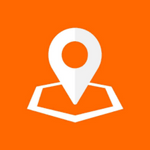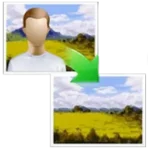Microsoft Office
Microsoft Corporation
November 10, 2021
4,160 MB
2021
Windows 11, Windows 10, Windows 8, Windows 7, Windows Vista, Windows XP
Description
Overview
Microsoft Office is a suite of productivity software. The suite includes a range of applications such as Word, Excel, PowerPoint, Outlook, and OneNote, which are designed to help individuals and businesses create, edit, and share documents, spreadsheets, presentations, emails, and notes. Microsoft Office is widely used around the world, and has become an essential tool for many businesses and individuals for its versatility, functionality, and ease of use.
Main Features
Microsoft Office is a comprehensive suite of productivity software applications that includes a wide range of features and tools. Here are some of the main features that are available in the most commonly used applications in the suite:
1. Word
- Advanced text formatting and styling options
- Collaboration tools for multiple users to simultaneously work on the same document
- Integration with grammar and spell-checking tools
- Page layout and design features for creating professional-looking documents
- Support for multiple file formats including .docx, .pdf, and .rtf
2. Excel
- Advanced data analysis and manipulation tools
- Support for pivot tables and charts to visualize and analyze data
- Integration with third-party data sources for importing and exporting data
- Powerful formula and function library for performing complex calculations
- Collaboration tools for multiple users to work on the same spreadsheet simultaneously
3. PowerPoint
- Professional design templates and themes for creating visually appealing presentations
- Advanced slide layout and design options for customizing presentations
- Support for multimedia content including images, videos, and audio files
- Collaboration tools for multiple users to simultaneously work on the same presentation
- Ability to create and edit animations, transitions, and other visual effects
4. Microsoft Office Outlook
- Email management tools for organizing and filtering incoming messages
- Calendar and scheduling features for managing appointments and events
- Integration with contact management tools for managing and tracking contacts
- Support for multiple email accounts and message formats
- Advanced security and privacy features for protecting sensitive information
5. OneNote
- Note-taking tools for capturing ideas, thoughts, and other information
- Support for multimedia content including images, videos, and audio files
- Integration with third-party apps and services for importing and exporting notes
- Collaboration tools for multiple users to work on the same notebook simultaneously
- Ability to organize and search notes by tags, categories, and other criteria
Some Pros and Cons
Pros
- Versatility: Microsoft Office includes a wide range of applications and tools that can be used for various tasks, from creating documents to analyzing data to managing emails and schedules.
- Familiarity: Microsoft Office has been around for many years and is widely used around the world, making it a familiar and comfortable choice for many individuals and businesses.
- Collaboration: Microsoft Office includes a range of collaboration tools, such as co-authoring, commenting, and sharing, that allow multiple users to work on the same documents simultaneously.
- Integration: Microsoft Office integrates with a wide range of third-party applications and services, such as cloud storage providers, email clients, and project management tools.
- Regular updates: Microsoft releases regular updates and new features to the software, ensuring that it remains up-to-date and relevant.
Cons
- Cost: Microsoft Office can be expensive, especially for businesses or individuals who require multiple licenses or subscriptions.
- Complexity: Microsoft Office includes a wide range of features and tools, which can make it overwhelming and complex for some users, especially those who are new to the software.
- Compatibility issues: Microsoft Office files may not always be compatible with other software applications or operating systems, which can cause issues when sharing or transferring files.
Alternatives
Google Workspace (formerly G Suite): Google’s suite of productivity software includes applications such as Google Docs, Sheets, Slides, and Gmail. It offers many of the same features as Microsoft Office, but with a cloud-based and collaborative focus.
Apple iWork: Apple’s suite of productivity software includes applications such as Pages, Numbers, and Keynote. It is a free alternative to Microsoft Office for Mac users, and offers many of the same features as Microsoft Office.
LibreOffice: LibreOffice is a free and open-source suite of productivity software that includes applications such as Writer, Calc, and Impress. It offers many of the same features as Microsoft Office, but with a focus on open-source and community-driven development.
WPS Office: WPS Office is a suite of productivity software developed by Kingsoft. It includes applications such as Writer, Spreadsheets, and Presentation, and offers many of the same features as Microsoft Office at a lower cost.
Zoho Office Suite: Zoho’s suite of productivity software includes applications such as Writer, Sheet, and Show. It offers many of the same features as Microsoft Office, with a focus on cloud-based and collaborative features.
How to use?
Using Microsoft Office depends on the specific application you want to use, but here are some general steps to get started:
Install Microsoft Office: If you haven’t already, you’ll need to install Microsoft Office on your computer or device. You can purchase a license or subscription through the Microsoft website or from a retailer.
Open the application: Once you’ve installed Microsoft Office, open the application you want to use, such as Microsoft Word for word processing or Microsoft Excel for spreadsheets.
Create a new document: To create a new document, click on the “File” menu and select “New” or use the keyboard shortcut Ctrl+N. From there, you can choose a template or start with a blank document.
Customize the document: Use the various tools and features within the application to customize your document, such as formatting text, inserting images or charts, or creating formulas.
Save the document: When you’re finished working on your document, save it by clicking on the “File” menu and selecting “Save” or “Save As”. Choose a file name and location, and select the file format you want to use (such as .docx for Microsoft Word documents).
Share the document: If you want to share your document with others, you can use the sharing features within the application or save the document to a shared folder or cloud storage service such as OneDrive or Dropbox.
Final Words
In conclusion, Microsoft Office is a suite of productivity software that includes applications such as Word, Excel, PowerPoint, and Outlook. It offers a wide range of features and tools that allow users to create, edit, and manage documents, spreadsheets, presentations, and emails. While it has its pros and cons, including a high price point and occasional compatibility issues, Microsoft Office remains one of the most popular and widely used productivity software suites in the world.
However, there are also several alternatives available, such as Google Workspace, Apple iWork, LibreOffice, WPS Office, and Zoho Office Suite, that offer similar features and functionality at varying price points. Ultimately, the choice of which productivity suite to use will depend on individual needs and preferences.
Images






















